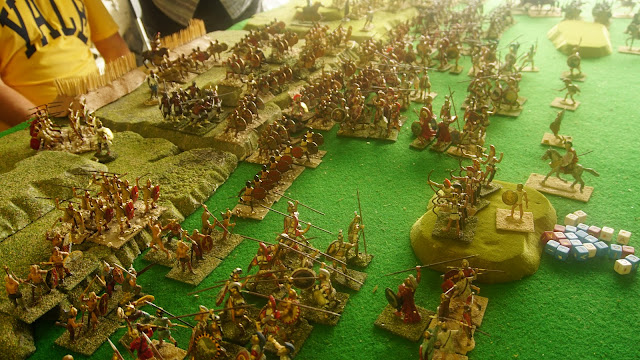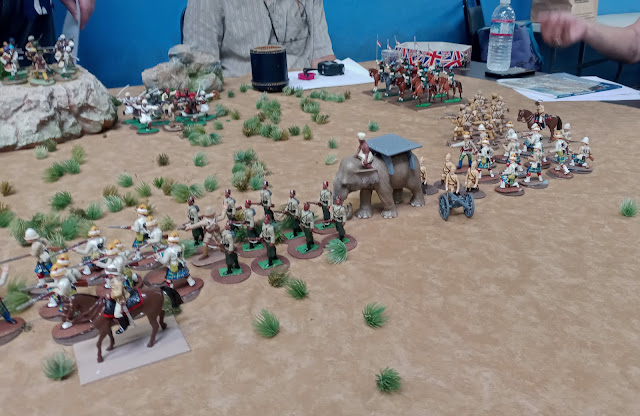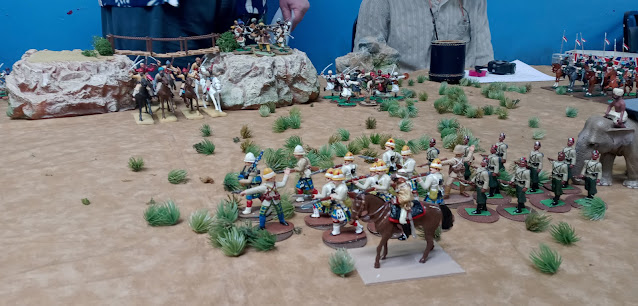Sunday, 24 September 2023
Battle of Himera (480 BC) in 54mm Carthage against the Greeks in Sicily- played on17 september 2023
Saturday, 9 September 2023
The Colonel's Got to Know - 54mm Gunga Din Game
I believe that watching the 1939 movie Gunga Din on TV when I was young greatly influenced my fascination with the Victorian colonial period, even before I saw Zulu on the big screen, which sealed the deal. I ran this scenario called The Colonel's Got to Know back in 2015 or 2016 as a Larry Brom, author of The Sword and the Flame (TSATF), memorial game. This is the first time I have run the game in 54mm. I used The Men Who Would Be Kings (TMWWBK) rules. If you recall the final battle in the movie, a British column matches into a Thuggee ambush on their way to rescue 3 sergeants, taken prisoner. They are only saved by the timely bugle call from Gunga Din, who, severely wounded, climbs the spire of the temple to sound the alarm. In my game, the British player rolls a D6 and moves the column 6 inches per dice roll until the rolls total 15. In this game that came after 4 rolls, so 24 inches into the canyon of death. The Thuggees immediately decided to attack the column rather than wait and shoot at it from long range. This proved to be a mistake, since British firepower was much stronger. The poor Highland unit that was out in front of the column suffered the worst damage from Thuggee fire, including an old cannon and when down from 12 to 2 men over the course of the game. The heroes on the British side were the Bengal Lancers who manged to rout 4 Thuggee units, including the gun crew before they too were destroyed. As it happened, I made the British too strong so future games will have to be more balanced. All in all it was a fun play test.







































